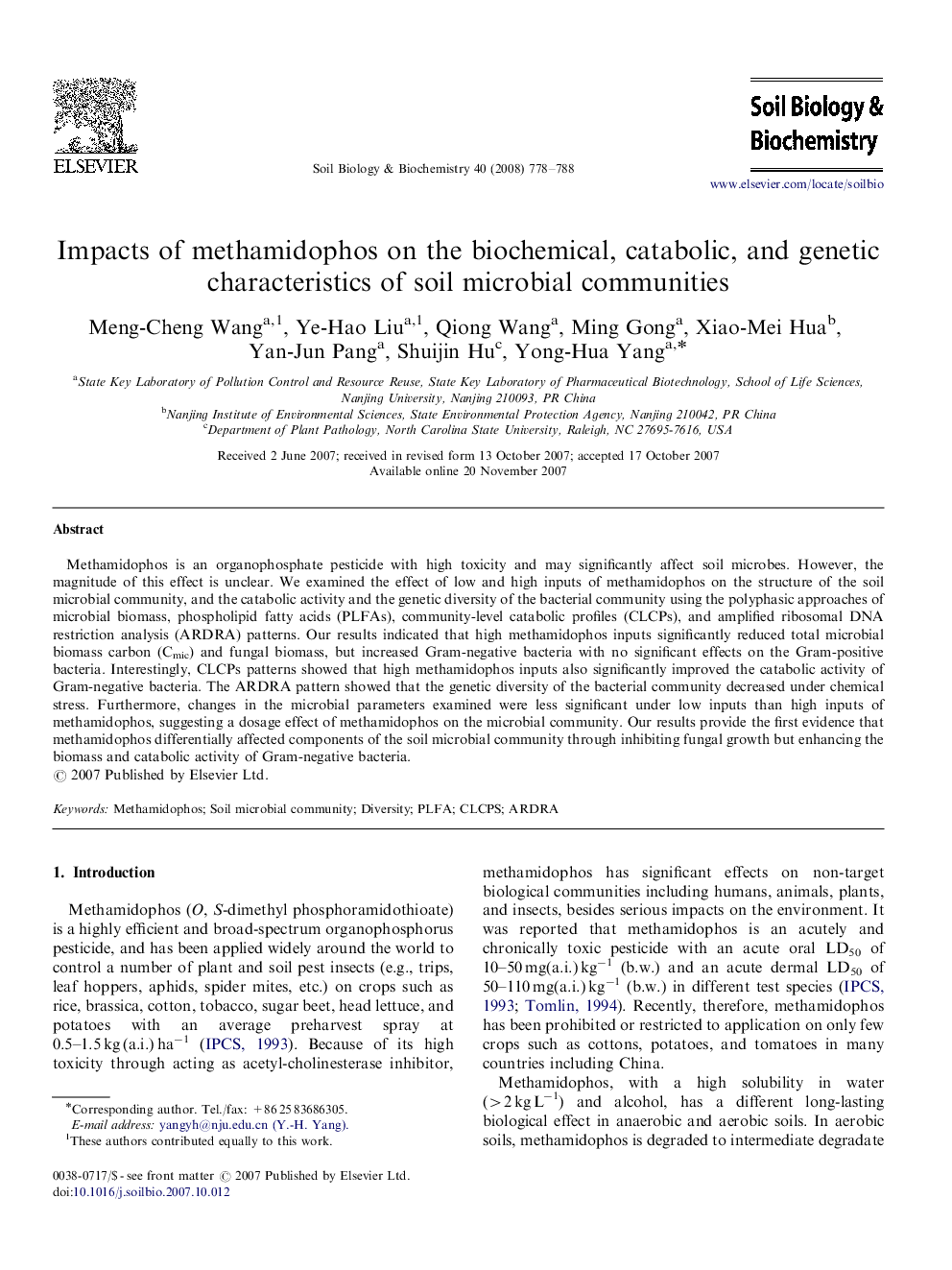| Article ID | Journal | Published Year | Pages | File Type |
|---|---|---|---|---|
| 2027003 | Soil Biology and Biochemistry | 2008 | 11 Pages |
Methamidophos is an organophosphate pesticide with high toxicity and may significantly affect soil microbes. However, the magnitude of this effect is unclear. We examined the effect of low and high inputs of methamidophos on the structure of the soil microbial community, and the catabolic activity and the genetic diversity of the bacterial community using the polyphasic approaches of microbial biomass, phospholipid fatty acids (PLFAs), community-level catabolic profiles (CLCPs), and amplified ribosomal DNA restriction analysis (ARDRA) patterns. Our results indicated that high methamidophos inputs significantly reduced total microbial biomass carbon (Cmic) and fungal biomass, but increased Gram-negative bacteria with no significant effects on the Gram-positive bacteria. Interestingly, CLCPs patterns showed that high methamidophos inputs also significantly improved the catabolic activity of Gram-negative bacteria. The ARDRA pattern showed that the genetic diversity of the bacterial community decreased under chemical stress. Furthermore, changes in the microbial parameters examined were less significant under low inputs than high inputs of methamidophos, suggesting a dosage effect of methamidophos on the microbial community. Our results provide the first evidence that methamidophos differentially affected components of the soil microbial community through inhibiting fungal growth but enhancing the biomass and catabolic activity of Gram-negative bacteria.
